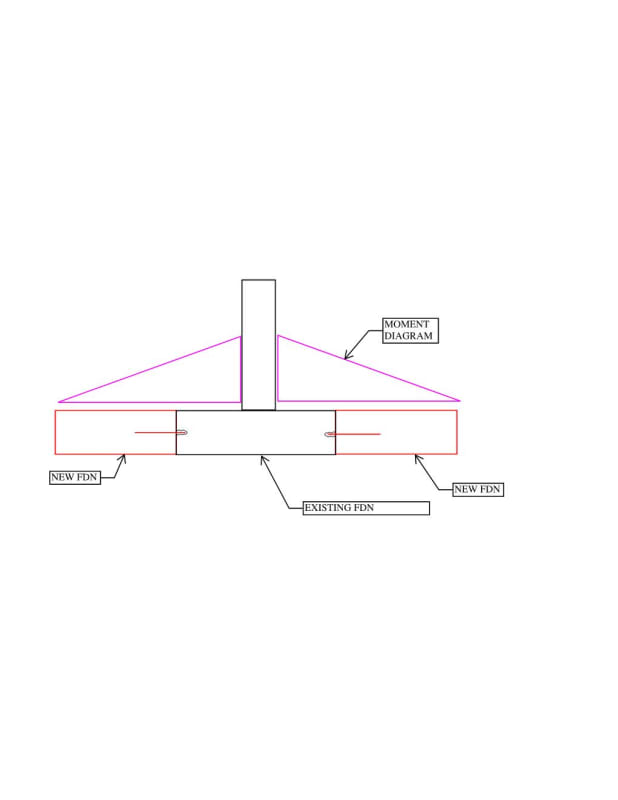BAGW
Structural
- Jul 15, 2015
- 388
Hi all,
I am reinforcing an existing foundation as the loads on the foundation has increased. Solution I am thinking of is adding more concrete on either side of foundation and attaching them using epoxy rebars to reduce the bearing pressure. Punching and one way is not an issue.
How to make sure the epoxy rebars are good enough to develop the moment resulting from the load at the joint.
I am leaning towards creating a new foundation by digging below the existing.
Any inputs on how to calculate the moment transfer at the joint?

I am reinforcing an existing foundation as the loads on the foundation has increased. Solution I am thinking of is adding more concrete on either side of foundation and attaching them using epoxy rebars to reduce the bearing pressure. Punching and one way is not an issue.
How to make sure the epoxy rebars are good enough to develop the moment resulting from the load at the joint.
I am leaning towards creating a new foundation by digging below the existing.
Any inputs on how to calculate the moment transfer at the joint?


![[idea] [idea] [idea]](/data/assets/smilies/idea.gif)